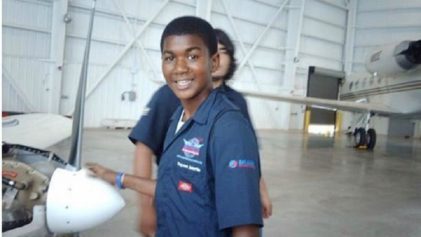As people in many cities around the country found peaceful ways to vent following the acquittal of George Zimmerman in the slaying of 17-year-old Trayvon Martin, it was in Los Angeles where protests turned violent—just as in 1992 when riots in Los Angeles turned deadly following the acquittal of police officers in the Rodney King beating.
The L.A. protesters ran through the streets breaking store windows, stopping traffic and attacking passing cars and pedestrians late Monday night. At least 14 people were arrested. It all began as a peaceful “prayer rally” in Leimert Park organized by Project Islamic H.O.P.E. But when about 150 people broke off from that gathering, the vandalism and assaults began.
By 9 p.m., the LAPD declared a tactical alert as crowds swelled in the streets, and the police later declared an unlawful assembly, allowing them to arrest protesters who did not clear the streets.
“We are a better city than what we have seen tonight in the hands of a few people, and we will make sure that the community here in South Los Angeles is safe on its streets,” said the city’s newly elected mayor, Eric Garcetti, at a news conference Monday night as he appealed to the protesters to remain peaceful.
“The Martin family didn’t ask anybody to break car windows,” he said. “They didn’t ask anybody to take little kids’ scooters. They didn’t ask anyone to attack businesses. And they certainly didn’t say to take over traffic in the streets.”
The unrest in Los Angeles contrasted with the large peaceful protests in cities like New York, Oakland, Chicago, Washington and Atlanta. In Oakland, demonstrators blocked traffic along Interstate 880 for a brief period during the afternoon rush hour Monday, but authorities were soon able to clear the road.
The anger in LA’s Crenshaw District, the heart of the city’s black community, caused Mayor Garcetti to cut short a planned trip after protesters blocked an on-ramp to Interstate 10 in South Los Angeles on Sunday afternoon.
“This is much bigger than just this one trial,” Oriana Sly, a 20-year-old Los Angeles resident, told the New York Times as she carried a sign that read “Justice for Trayvon” while marching up Crenshaw Boulevard on Sunday night. “We people of color have always been at the bottom of the totem pole. People of color have not received our fair share with the American justice system.”
On Monday, protesters broke windows at Wal-Mart and several other stores while they ran through the streets, blocked traffic and jumped on stopped cars, kicking them and dancing on the hoods. They even attacked a local television news crew.
“Twenty-one years ago we witnessed what could happen when there’s a reaction to a verdict,” said Mark Ridley-Thomas, a Los Angeles County supervisor who represents South Los Angeles. “Similar sentiments are being expressed here in this space, but the response of the LAPD is qualitatively different. It has taken a posture of respecting the constitutional rights of those who choose to peacefully express their point of view, even at the point of protest.”
He said nonviolence was “the most effective way to communicate how to address injustice.”
In contrast to LA, residents in Sanford, Fla., where the killing took place, were largely quiet on Monday.
“We might be angry about the verdict,” said Larry Williams, 55, as he sat in a barbershop in Goldsboro on Monday. “But why go out and do anything you would not want to do?”


